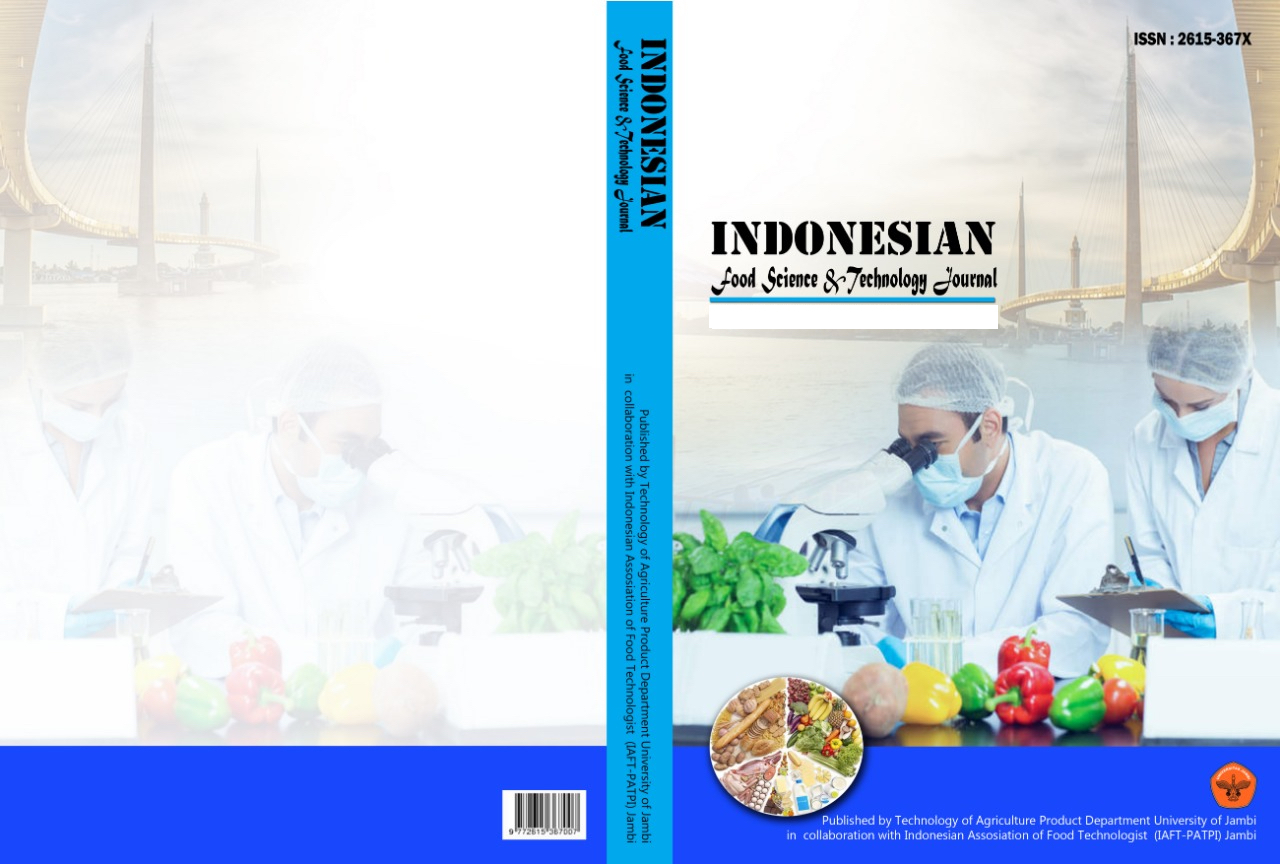Antibacterial Activities Of Capsicum Frutescens Extracts On Bacteria Isolated From Domestic Food Wastes In Akure
DOI:
https://doi.org/10.22437/ifstj.v4i1.11077Keywords:
Capsicum frutescens, Domestic food waste, Antibacterial effectAbstract
The aim of this experiment was to determine the antibacterial actions of the extracts of Capsicum frutescens on Forty four (44) bacteria associated with domestic food wastes in Akure metropolis, Ondo State, Nigeria. The bacteria were subjected to antibacterial test using unfiltered extract (UFE) and filtered extract (FE) of Capsicum frutescens prepared by grinding and filtering long pepper fruits in sterile distilled water in a ratio 1:2 (w/v) in mortal, pestle and Whatman paper by Agar Well Diffusion Methods. The aqueous extracts of C. frutescens showed strong appreciable antibacterial activity against the entire test bacteria. The unfiltered extract demonstrated better antibacterial action over the filtered extract. The zones of inhibition exhibited by UFE and FE were 3.33±0.33 mm to 6.00±0.58 mm and 1.33±0.58 mm to 3.33±0.33 mm. Hence, widest and least inhibitions were observed against Proteus mirabilis, Bacillus licheniformis, Myroids odoratimimus and Proteus vulgaris.
Downloads
References
. Akobundu, O. I. (1998). A handbook of West African weeds. International Institute Tropical Agriculture, 2 pp. 564-571
. Alvarez-Parrilla, E., la Rosa, L. A., Amarowicz, R. and Shahidi, F. (2011). Antioxidant activity of fresh and processed Jalapeño and Serrano peppers. Journal of Agricultural Food Chemistry, 59 pp. 163–173.
. Amusa, N. A., Kehinde, I. A. and Adegbite, A. A. (2004). Pepper fruit anthracnose in the humid forest of south-western Nigeria. Nutrition and Food Science, 34(3) pp. 130-134.
. Bello, I., Boboye, B. E. and Akinyosoye, F. A. (2015). Phytochemical screening and antibacterial properties of selected Nigerian long pepper (Capsicum frutescens) fruits. African Journal of Microbiology Research, 9(38) pp. 2067-2078.
. Boboye, B., Babatunde, T. and Onoriode, A. (2007). Antibacterial activities of some plants used as condiments and spices in Nigeria. Current World Enviroment, 2(2) pp. 171-174.
. Ferrara, A., Lovelli, S., Di Tommaso, T. and Perniola, M. (2011). Flowering, growth and fruit setting in greenhouse bell pepper under water stress. Journal of Agronomy, 10 pp. 12-19.
. Gayathri, N., Sekar, T. and Gopalakrishnan, M. (2016). Phytochemical screening and antimicrobial activity of Capsicum chinense Jacq. International Journal of Advances in Pharmaceutics, 3(1) pp. 2330-1923.
. Hodges, R. J., Buzby, J. C. and Bennett, B. (2010). Postharvest losses and waste in developed and less developed countries: opportunities to improve resource use. Journal of Agricultural Science, 149 pp. 37- 45.
. Koffi-Nevry, R., Kouassi, K. C. Nanga, Z. Y. Koussémon, M. and Yao Loukou, Y. (2012). Antibacterial Activity of Two Bell Pepper Extracts: Capsicum annuum L. and Capsicum frutescens. International Journal of Food Properties, 15(5) pp. 961-967.
. Lamb, G. and Fountain, L. (2010). Waste in action. pp. 6
. Monali P, Mishra R, Shasank S, Goutam G, Debajyoti Das and Rabindra N (2015). In vitro antibacterial activity of crude extracts of nine selected medicinal plants against UTI causing multidrug resistance (MDR) bacteria. J King S U 4 pp. 36-44.
. Sterm, K. R. (2000). Introductory plant biology, Mac Graw Hill Company Inc. United States of America. pp. 630.
. Than, P., Prihastuti, H., Phoulivong, S., Paul, W., Taylor, J. and Hyde, K. D. (2008). Chilli anthracnose disease caused by Colletotrichum species. International Symposium on Fungal Diversity. pp. 16-19.
Downloads
Published
How to Cite
Issue
Section
License
Copyright (c) 2021 Ayodele Isaac, Ajibulu Ajibulu, O Oluyomi

This work is licensed under a Creative Commons Attribution 4.0 International License.



